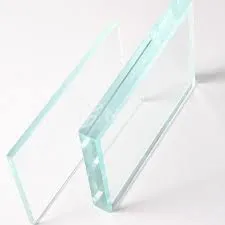The Versatility of Tempered Glass Strength and Aesthetics Combined
In recent years, tempered glass has emerged as a pivotal material within various industries, from architecture to consumer electronics. Known for its exceptional strength, durability, and safety features, tempered glass has become a popular choice for both functional and aesthetic applications. This article explores the properties, applications, and benefits of tempered glass, elucidating why it is regarded as a material of choice in modern design and construction.
Tempered glass, also known as toughened glass, is produced through a process of extreme heating and rapid cooling. Initially, the glass is heated to temperatures exceeding 600 degrees Celsius, followed by a rapid cooling process that enhances its strength. This treatment increases its tensile strength, making it approximately five to six times stronger than standard glass. The increased robustness allows tempered glass to withstand high impacts and significant temperature fluctuations, which is particularly advantageous for applications exposed to harsh conditions.
The Versatility of Tempered Glass Strength and Aesthetics Combined
In addition to its applications in construction, tempered glass has made significant inroads into the electronics industry. It is commonly used as a protective layer for smartphones and tablets. The toughened surface resists scratches and cracks, prolonging the life of electronic devices while maintaining clarity and touch sensitivity. This has made tempered glass screen protectors a staple for anyone looking to safeguard their gadgets without compromising functionality.
temp glass
Tempered glass is also an increasingly popular choice in furniture design. From glass tabletops to shelving units, the material adds a touch of elegance and modernity to interior spaces. Its ability to blend with various designs, whether minimalist, industrial, or contemporary, enables it to serve as both a functional and decorative element in homes and offices.
Environmentally conscious consumers appreciate that tempered glass is a recyclable material. Unlike some plastics, glass can be recycled multiple times without losing its quality, making it a more sustainable option. The production of tempered glass also tends to have a lower environmental footprint compared to other materials used in construction and furniture.
However, it is essential to note that while tempered glass offers numerous benefits, it is not completely impervious to failure. Improper installation or exposure to certain conditions can lead to spontaneous breakage, known as thermal breakage. It is crucial for professionals in the industry to ensure proper installation and handling to maintain the integrity and benefits of tempered glass.
In conclusion, tempered glass stands out as a remarkable material that harmoniously blends strength, safety, and elegance. Its unique properties and versatility make it suitable for a wide range of applications, from architecture to technology. As industries continue to innovate and prioritize sustainability, the demand for tempered glass is likely to increase, solidifying its place in modern design and functionality. Whether used in creating stunning architectural features or protecting our beloved electronics, tempered glass is indeed a testament to how safety and aesthetics can go hand in hand.
 Afrikaans
Afrikaans  Albanian
Albanian  Amharic
Amharic  Arabic
Arabic  Armenian
Armenian  Azerbaijani
Azerbaijani  Basque
Basque  Belarusian
Belarusian  Bengali
Bengali  Bosnian
Bosnian  Bulgarian
Bulgarian  Catalan
Catalan  Cebuano
Cebuano  Corsican
Corsican  Croatian
Croatian  Czech
Czech  Danish
Danish  Dutch
Dutch  English
English  Esperanto
Esperanto  Estonian
Estonian  Finnish
Finnish  French
French  Frisian
Frisian  Galician
Galician  Georgian
Georgian  German
German  Greek
Greek  Gujarati
Gujarati  Haitian Creole
Haitian Creole  hausa
hausa  hawaiian
hawaiian  Hebrew
Hebrew  Hindi
Hindi  Miao
Miao  Hungarian
Hungarian  Icelandic
Icelandic  igbo
igbo  Indonesian
Indonesian  irish
irish  Italian
Italian  Japanese
Japanese  Javanese
Javanese  Kannada
Kannada  kazakh
kazakh  Khmer
Khmer  Rwandese
Rwandese  Korean
Korean  Kurdish
Kurdish  Kyrgyz
Kyrgyz  Lao
Lao  Latin
Latin  Latvian
Latvian  Lithuanian
Lithuanian  Luxembourgish
Luxembourgish  Macedonian
Macedonian  Malgashi
Malgashi  Malay
Malay  Malayalam
Malayalam  Maltese
Maltese  Maori
Maori  Marathi
Marathi  Mongolian
Mongolian  Myanmar
Myanmar  Nepali
Nepali  Norwegian
Norwegian  Norwegian
Norwegian  Occitan
Occitan  Pashto
Pashto  Persian
Persian  Polish
Polish  Portuguese
Portuguese  Punjabi
Punjabi  Romanian
Romanian  Russian
Russian  Samoan
Samoan  Scottish Gaelic
Scottish Gaelic  Serbian
Serbian  Sesotho
Sesotho  Shona
Shona  Sindhi
Sindhi  Sinhala
Sinhala  Slovak
Slovak  Slovenian
Slovenian  Somali
Somali  Spanish
Spanish  Sundanese
Sundanese  Swahili
Swahili  Swedish
Swedish  Tagalog
Tagalog  Tajik
Tajik  Tamil
Tamil  Tatar
Tatar  Telugu
Telugu  Thai
Thai  Turkish
Turkish  Turkmen
Turkmen  Ukrainian
Ukrainian  Urdu
Urdu  Uighur
Uighur  Uzbek
Uzbek  Vietnamese
Vietnamese  Welsh
Welsh  Bantu
Bantu  Yiddish
Yiddish  Yoruba
Yoruba  Zulu
Zulu 

